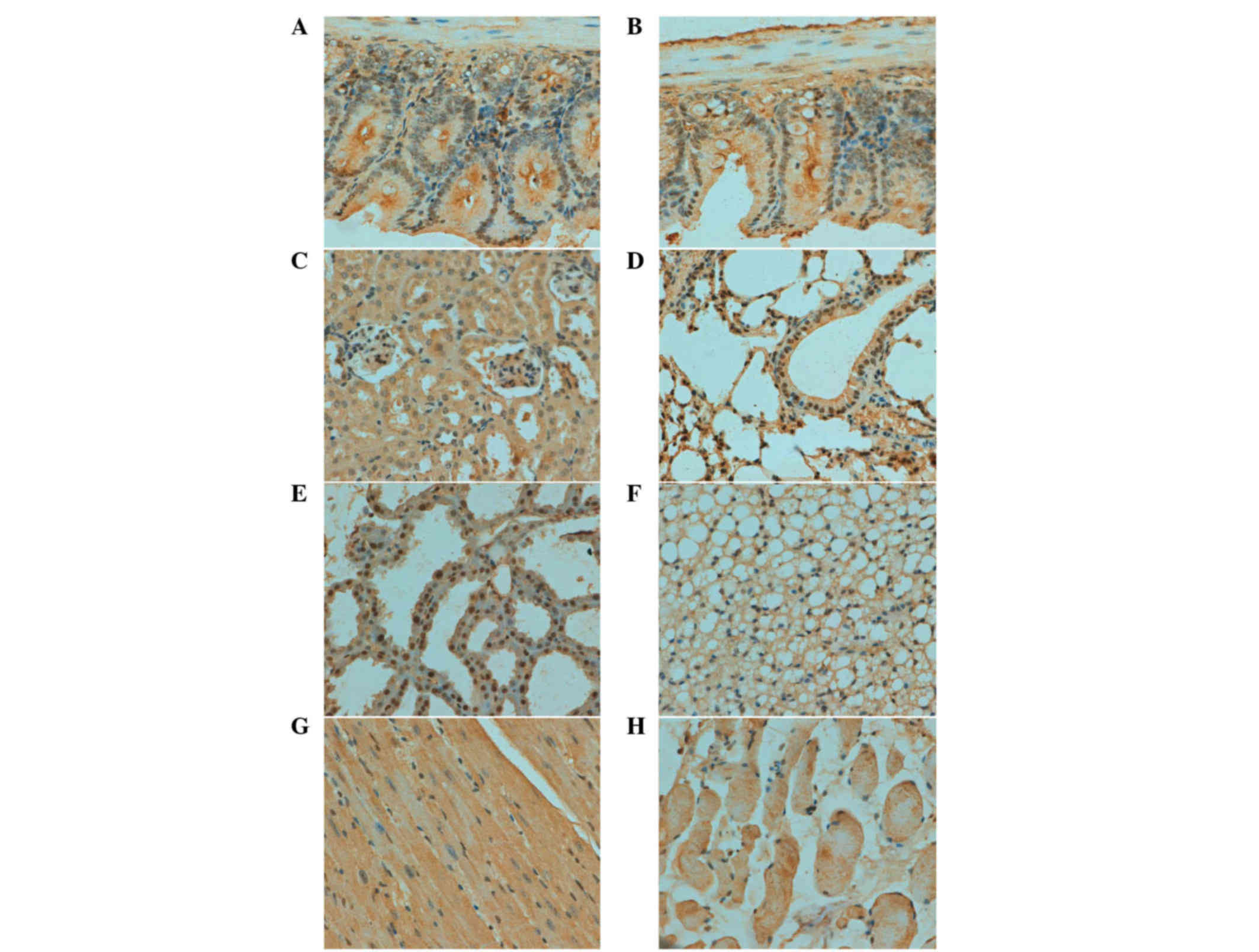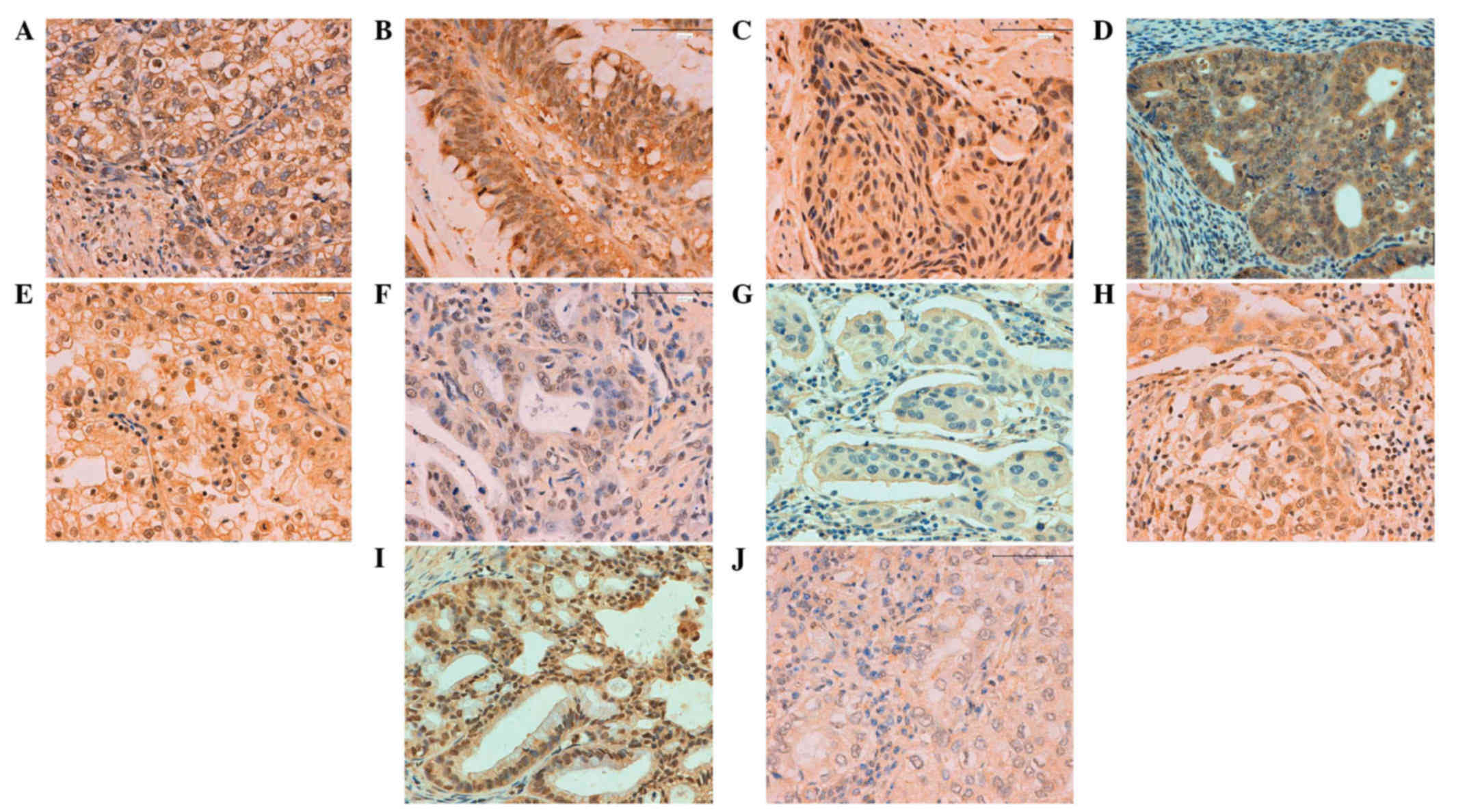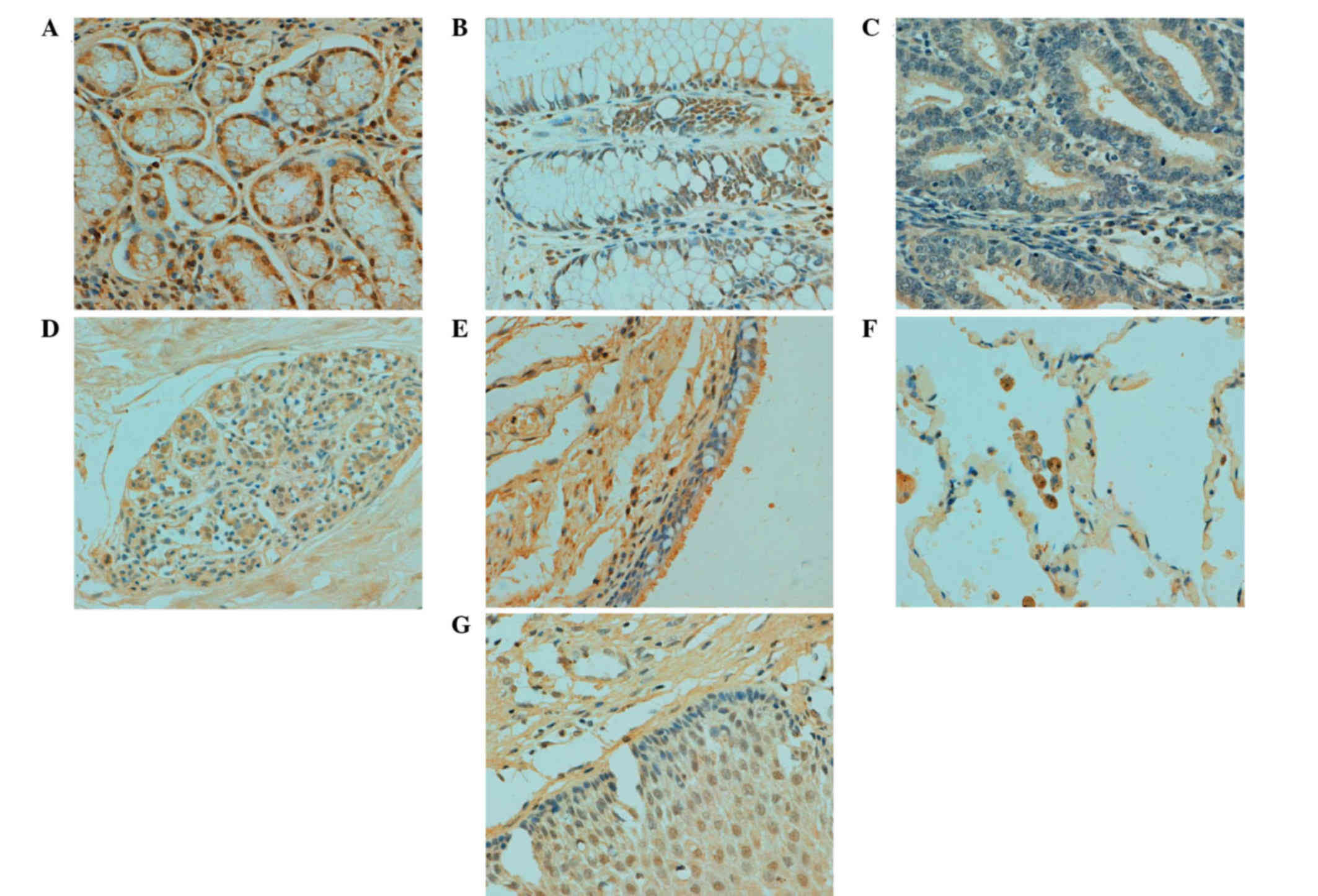Immunohistochemical profile of ING3 protein in normal and cancerous tissues
- Authors:
- Published online on: January 23, 2017 https://doi.org/10.3892/ol.2017.5632
- Pages: 1631-1636
-
Copyright: © Gou et al. This is an open access article distributed under the terms of Creative Commons Attribution License.
Metrics: Total
Views: 0 (Spandidos Publications: | PMC Statistics: )
Total PDF Downloads: 0 (Spandidos Publications: | PMC Statistics: )
Abstract
The inhibitor of growth family, member 3 (ING3) protein may be capable of blocking the cell cycle via activating p53‑transactivated promoters of p21 and Bcl2‑associated X protein, and may induce apoptosis via a Fas/caspase‑8‑dependent signaling pathway. In the present study, immunohistochemistry was performed in order to characterize the expression profile of ING3 protein in tissue microarrays containing mouse and human normal tissue, human hepatocellular (n=62), renal clear cell (n=62), pancreatic (n=62), esophageal squamous cell (n=45), cervical squamous cell (n=31), breast (n=144), gastric (n=196), colorectal (n=96), ovarian (n=208), endometrial (n=96) and lung carcinoma (n=192). In mouse tissue, ING3 protein was positively detected in the cytoplasm of cardiomyocytes, kidney and skeletal muscle cells, and was additionally detected in the cytoplasm and nucleus of bronchial and alveolar epithelium, gastric and intestinal gland, and mammary gland cells. In human tissues, ING3 protein was principally distributed in the cytoplasm, but was observed in the cytoplasm and nucleus of tongue, esophagus, stomach, intestine, lung, skin, appendix, bladder, cervix and breast cells. ING3 immunoreactivity was strongly detected in the stomach, skin and cervical tissues, whereas a weak signal was detected in the cerebellum, brain stem, thymus, liver, skeletal muscle, testis and prostate. In total, ING3‑positive specimens were identified in 424 of 1,194 tested cancer entities (35.5%). In a number of cases, ING3 expression was observed to be restricted to the cytoplasm and nucleus, excluding the cytoplasmic distribution identified in breast and hepatocellular carcinoma. Among these cases, ING3 was more frequently expressed in breast and gynecological types of cancer, including ovarian (59.2%), endometrial (47.9%), breast (38.9%) and cervical (35.5%) cancer. ING3‑positive cases were more rare in renal clear cell (17.7%), hepatocellular (16.1%) and esophageal carcinoma (17.8%). It is suggested that ING3 may be involved in the repair and regeneration of organs or tissues, and may be closely associated with gynecological carcinogenesis.













